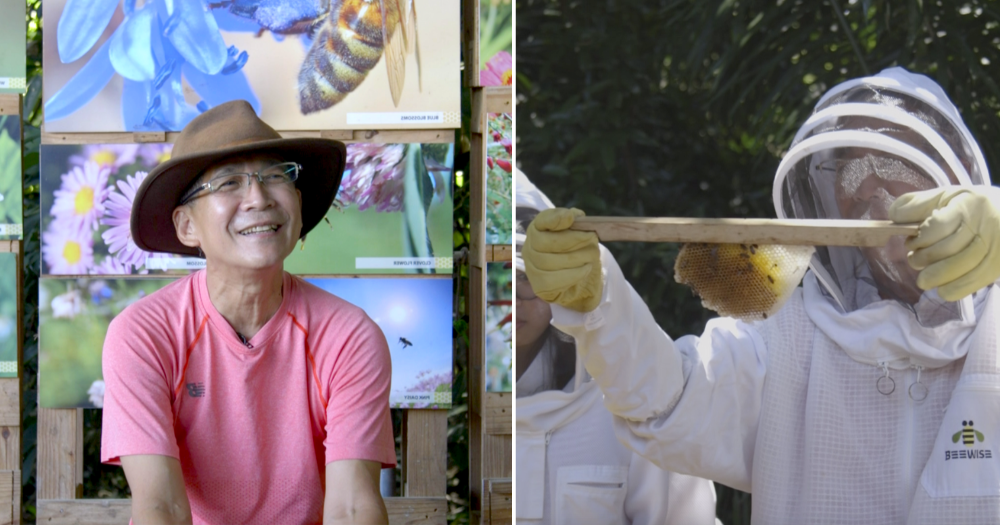It's probably safe to say that most Singaporeans don't enjoy being in the vicinity of bees.
If at all, it would either be running away from them screaming, or screaming in secondhand agony while watching wildlife personality Coyote Peterson intentionally sting himself in a perplexing act of masochism:
But for John Chong, bees (and being in close contact with many of them) are a very large part of his daily life — he's a beekeeper, and is the founder of BEE AMAZED Garden, one of Singapore's only beekeeping centres.
You can count on one hand the number of beekeepers or bee farms found in Singapore, and so one would expect Chong's beekeeping facility to be located basically in the middle of nowhere, like other farms that are often out in far-flung places.
We were, therefore, surprised to learn where his bee farm was.
A gem tucked away in... Yishun
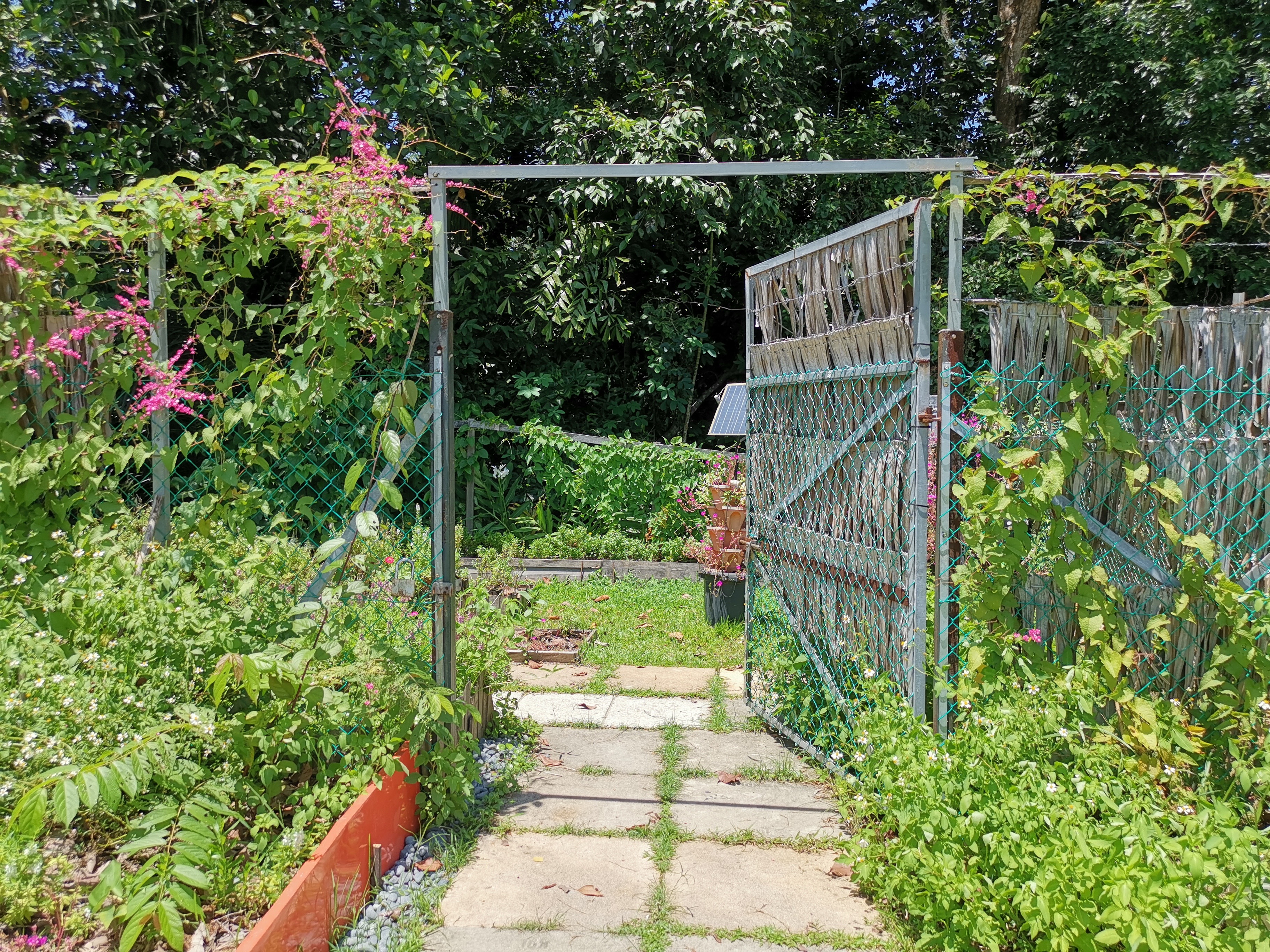 The entrance to BEE AMAZED Garden. Photo by Andrew Wong
The entrance to BEE AMAZED Garden. Photo by Andrew Wong
As our Grab driver dropped my colleagues and I off, we stood around uncertainly in front of a large green gate, beyond which we could make out a lush field and large pond. The air was fresh and there were no buildings in sight.
Huh, we all thought. Who knew Yishun — which some have called the "Twilight Zone of Singapore" — would contain this hidden gem of nature?
There were also no signs to help us decipher if we had arrived at the correct place, but Chong eventually emerges from one end of the grassy compound to greet us.
As he leads us to his bee garden, he immediately launches into an animated introduction of the venue — and that's where we discover Ground-Up initiative (GUI), a sustainable kampung-like community of like-minded individuals of which he is part.
37 years as MOE teacher, HOD and vice principal
Watching him meander through the garden and point out various trees and the fruits they bear, Chong truly looks at home among nature.
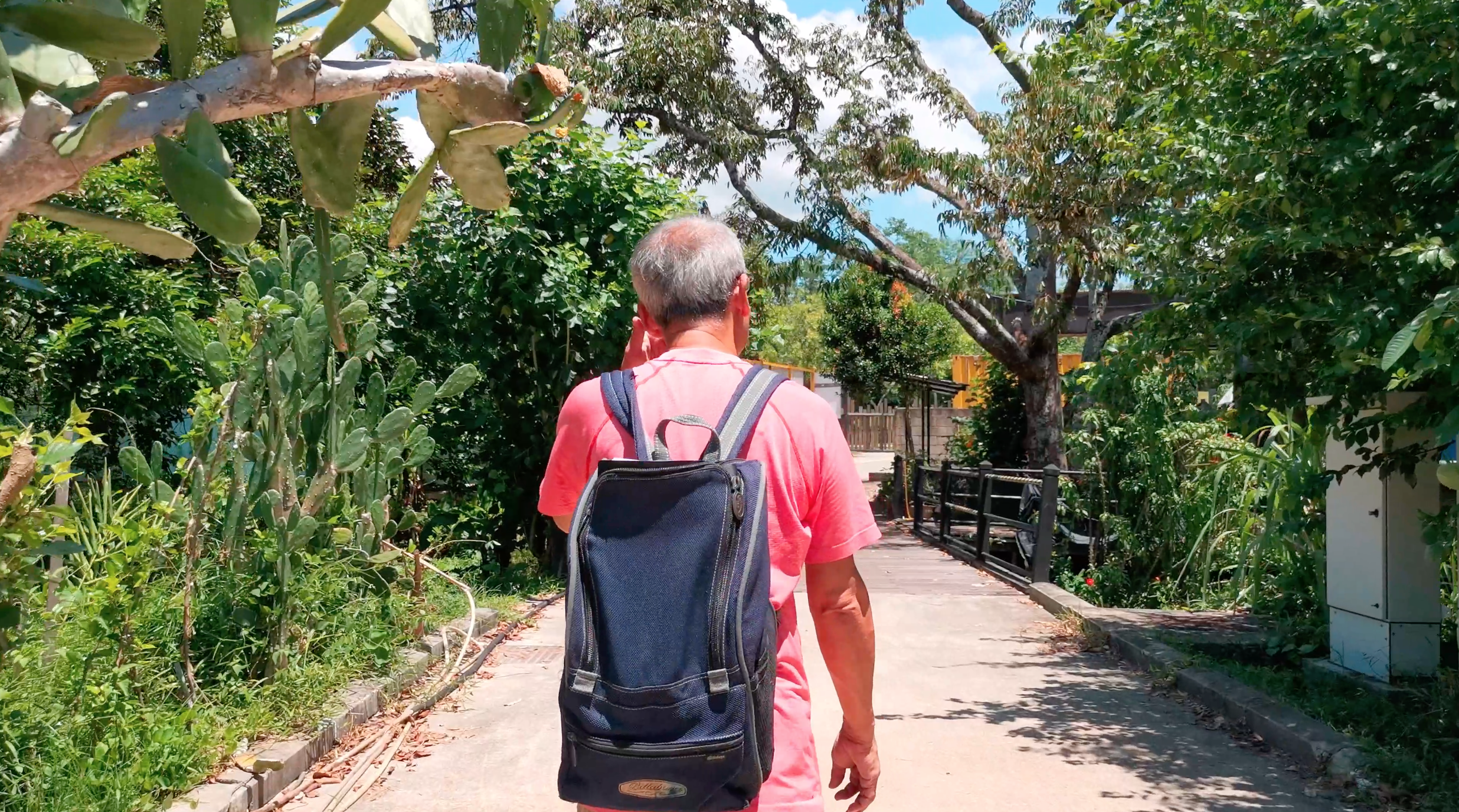 Photo by Andrew Wong
Photo by Andrew Wong
Dressed in a pink dry-fit shirt, cargo pants, boots, and a brown cowboy hat he insisted on putting on before our interview, we were hard-pressed to imagine Chong standing in a classroom in a starched collared shirt and tie — but that was precisely what he did at numerous points over a 37-year career in Singaporean mainstream education.
Chong's teaching career began in 1979 at the now defunct Yung An Primary School, and worked at numerous schools, including being one of nine Singaporean pioneering teachers who kickstarted the Singapore International School in Hong Kong.
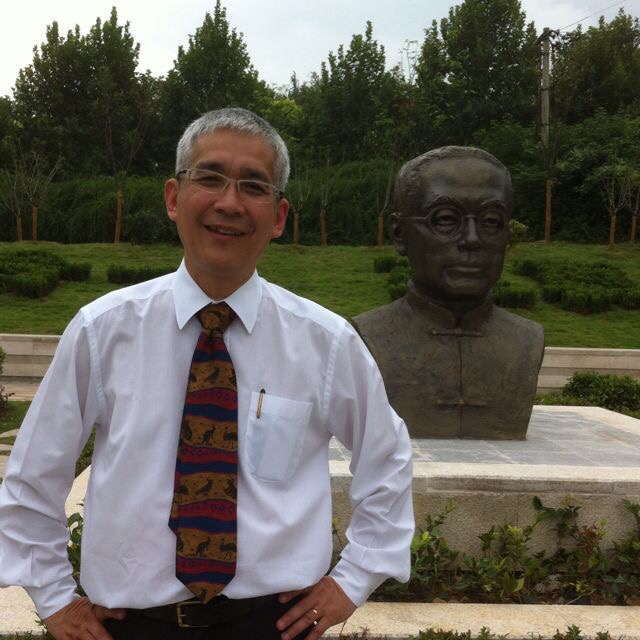 Photo courtesy of John Chong via beeamazed.com.sg
Photo courtesy of John Chong via beeamazed.com.sg
He would eventually become vice principal at Zhangde and MacPherson Primary Schools.
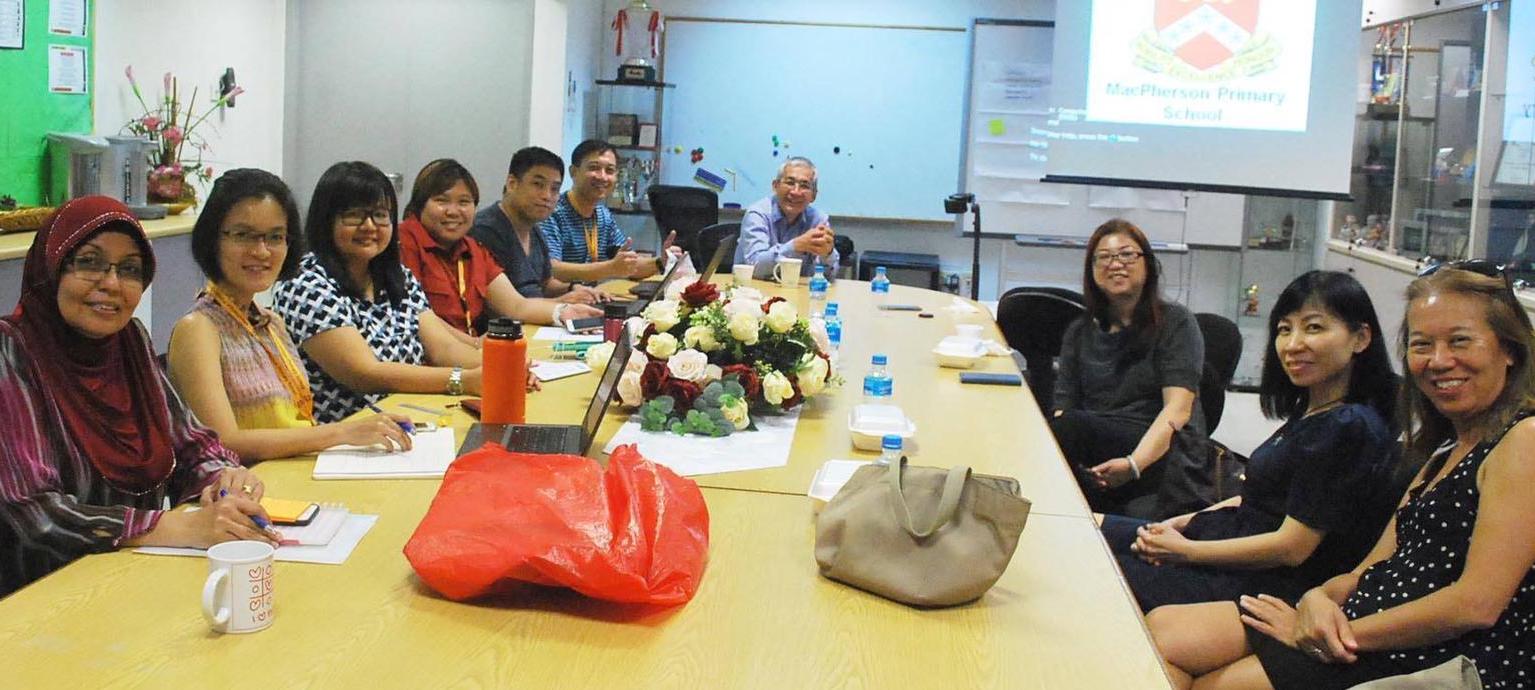 Chong as vice principal at MacPherson Primary School, pictured in blue at the head of the table. Photo courtesy of John Chong
Chong as vice principal at MacPherson Primary School, pictured in blue at the head of the table. Photo courtesy of John Chong
So why leave all that before one actually has to, right — especially for the arguably hazardous job he currently does?
Now make no mistake — Chong's passion for teaching is palpable, exclaiming to us immediately, "I love working in schools, I love interacting with students and the teachers!"
But a 2015 trip he took to Myanmar and India provided a new perspective.
"After my visit to the two countries, I saw the poverty there. And I thought, well, maybe it's time to give back to the society," he said. "That was the defining moment for me."
Chong humbly recalls wanting more out of life.
"I was a nobody, yet I could make it to the position of vice principal.
I thought now that I was reaching the last phase of my life, I wanted to contribute more than just leaving a legacy behind in school. I wanted to help improve the livelihoods of people in Myanmar and India."
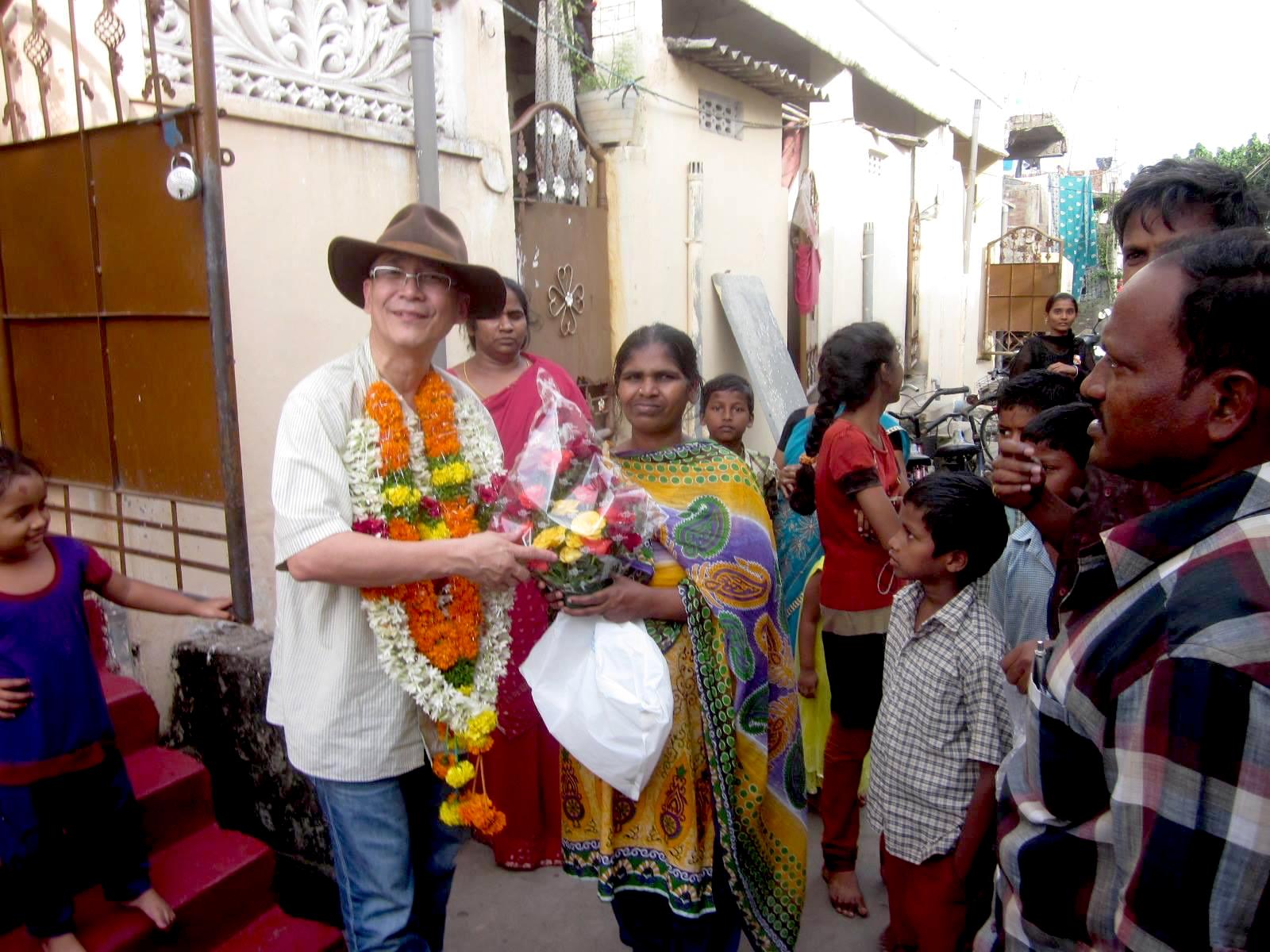 Chong in India with his trusty cowboy hat. Photo courtesy of John Chong
Chong in India with his trusty cowboy hat. Photo courtesy of John Chong
Upon his return, he gave MOE notice for early retirement (because he needed the ministry's approval to do so as a school leader). And a year later, it was granted to him — Chong retired in December 2016.
Now, how did this lead to bees?
Unfortunately, that grand plan didn't really pan out — Chong says he wanted to set up a vocational school in Myanmar but that fell through.
It wasn't until a chance encounter with some honey made by stingless bees, which Chong described as having a "unique" flavour, was his interest in bees and beekeeping kindled.
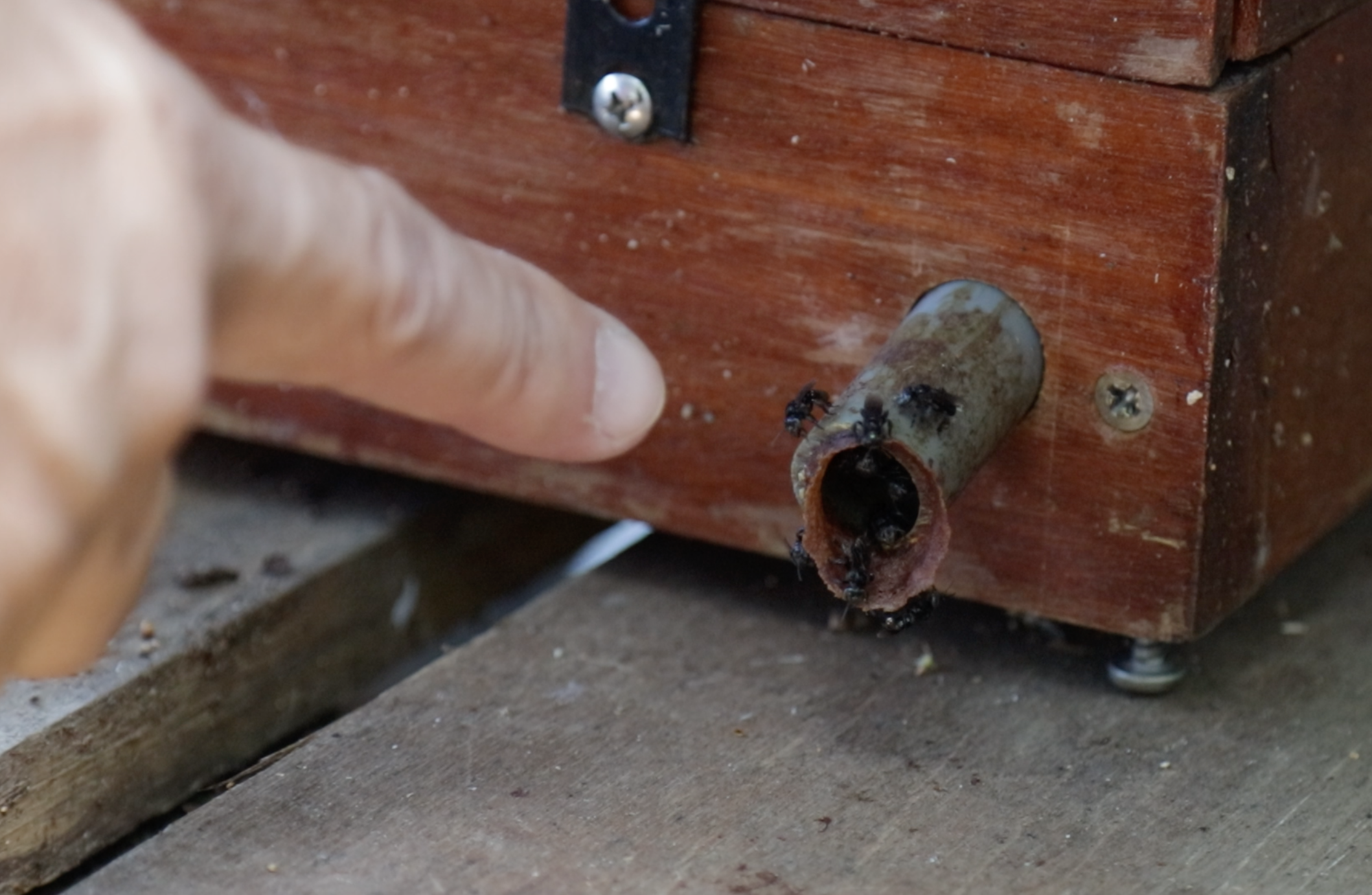 Some of the stingless bees at BEE AMAZED, guarding the entrance to their hive. Photo by Angela Lim
Some of the stingless bees at BEE AMAZED, guarding the entrance to their hive. Photo by Angela Lim
When his son went to Australia for studies, Chong took the chance to accompany him there. In a bid to learn more about beekeeping, he wrote to 10 local beekeepers seeking career advice. One of the four who responded to him was rearing bees in an interesting setting.
"The urban beekeeper told me he keeps his bees in the Central Business District (CBD). And wow! That got me interested, because in Singapore we have a CBD too! All those buildings and banks, even in Orchard Road, maybe I can keep my bees there."
A second meeting with a backyard beekeeper — literally, one who keeps his bees in the backyard of his home — in Australia further convinced Chong that this was the career he desired. "Backyard beekeeper" is a title he now gladly adopts.
Chong had his first real encounter with bees when assisting the Australian backyard beekeeper with a relocation. He recalls the experience with the enthusiasm of a small child getting a pet for the first time:
"My first encounter with bees was truly amazing, even though I was stung twice. The bees managed to sting me on my ear and neck despite the protection [in the form of a bee suit] I had on.
I was expecting to die, but I didn't die. No swollen face, no severe allergy, nothing. It just felt like a mosquito bite, but of course slightly more painful. So in my heart, I congratulated myself, 'Yay,' I thought, 'I can be a beekeeper now!'"
Other experienced beekeepers Chong contacted in Australia were also greatly encouraging when they heard of Chong's pursuits. Since then, Chong decided to concentrate on his beekeeping efforts in Singapore. He even hired a consultant — a fellow Singaporean beekeeper — to teach him the tricks of the trade.
"They told me to 'Just do it!' It's so simple. Just do it. So with that in mind, I just did it. And here I am now."
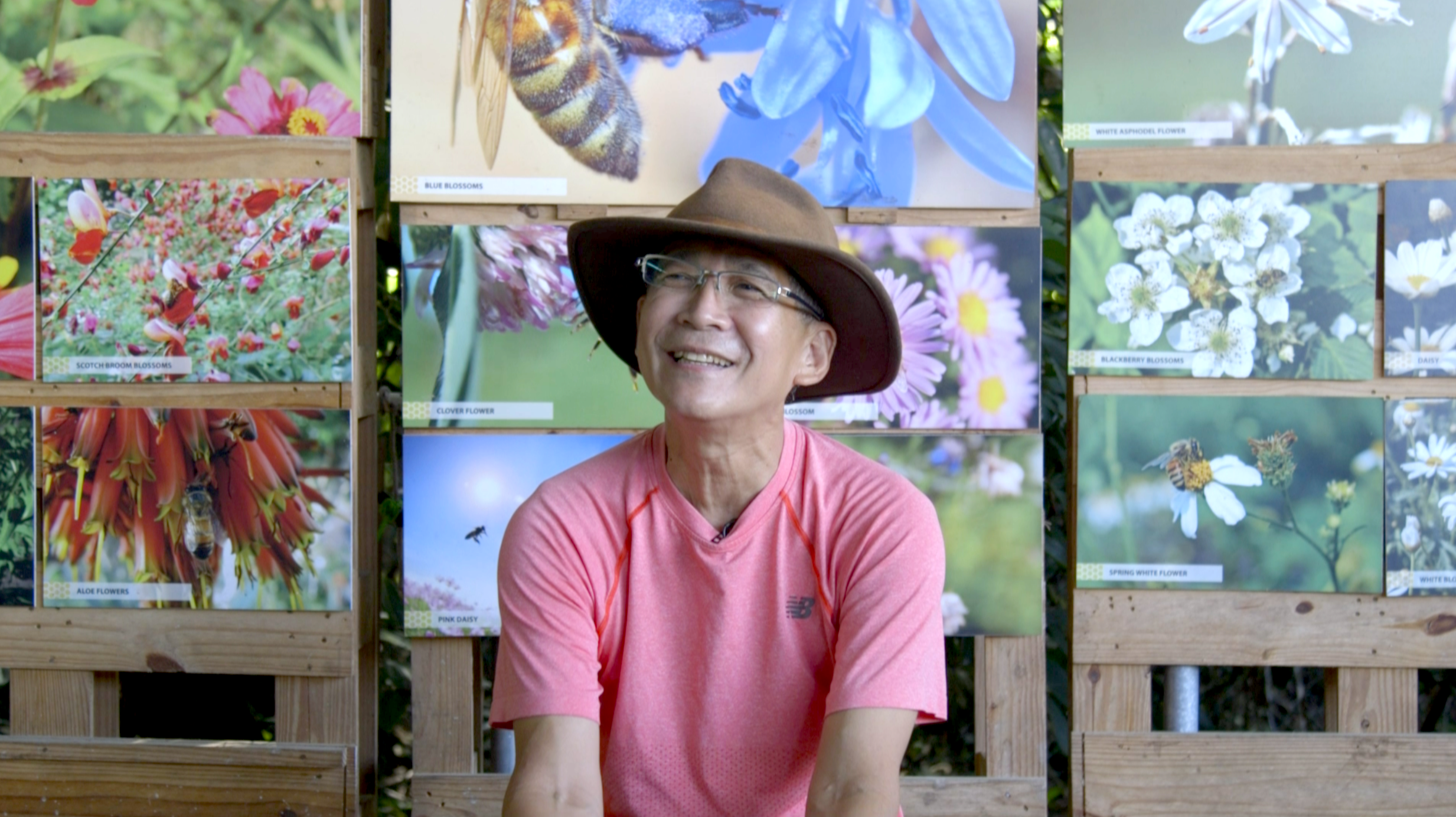 Photo by Angela Lim
Photo by Angela Lim
Still a teacher at heart
All of Chong's effort has since culminated in BEE AMAZED Garden, which he started in December 2017.
But Chong hasn't really left his teaching career behind.
Far from being a solo hobby or leisurely pursuit for Chong — he also conducts workshops, basic beekeeping lessons and honey-tasting sessions.
On the small plot of land that Chong's garden occupies within the GUI compound, visitors first step into a small, but very well-kept garden. The plants are flourishing, each patch of flowers carefully labelled. This, Chong says, is where his bees collect their pollen and nectar.
Beyond that lies a long narrow observation deck from which guests are able to safely observe the rows of beehives he maintains from behind a mesh wall.
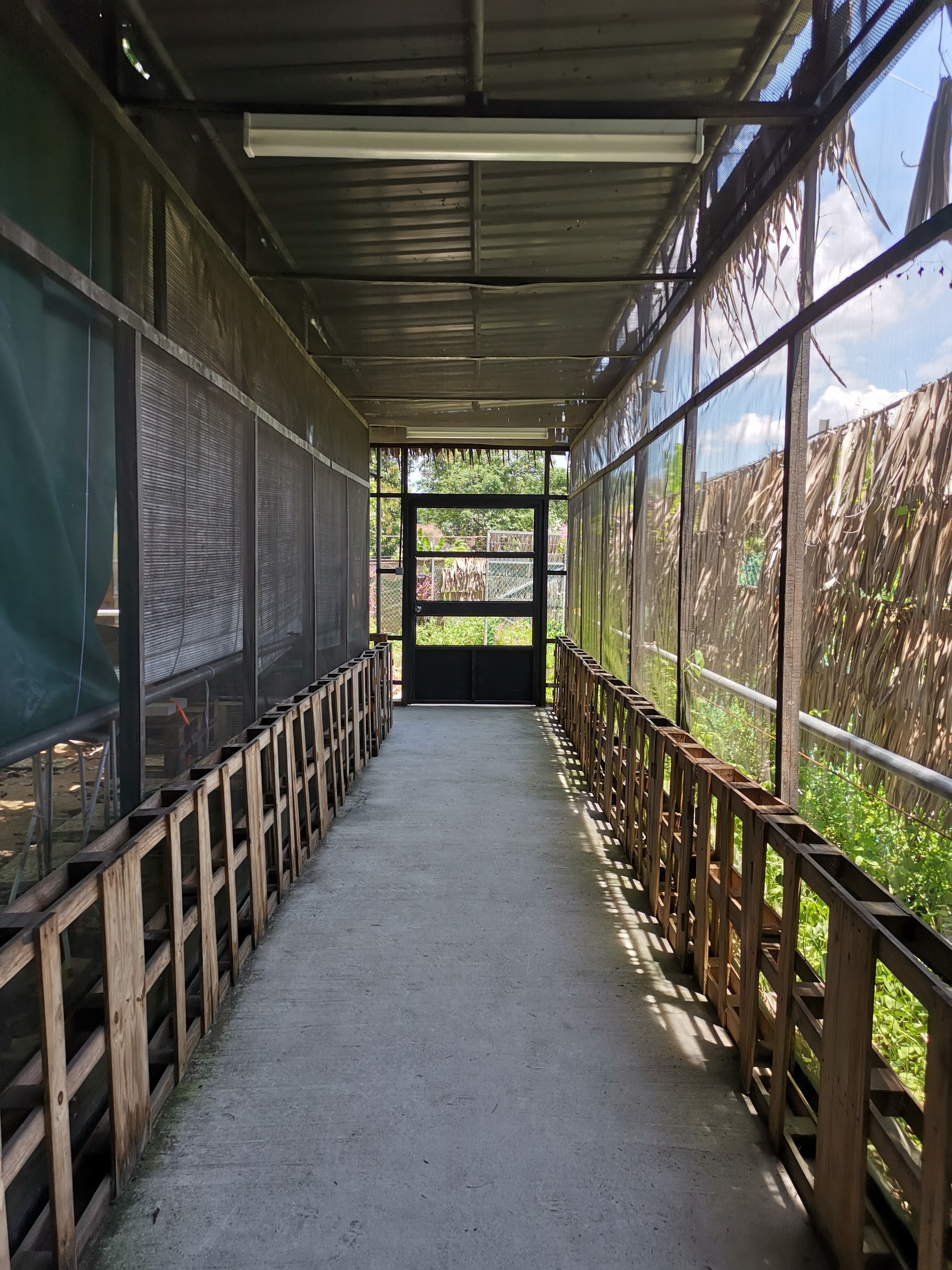 The observation deck in BEE AMAZED Garden. Photo by Andrew Wong
The observation deck in BEE AMAZED Garden. Photo by Andrew Wong
Further down is a sheltered area where Chong conducts his workshops. Rows of seats made from upcycled wooden pallets are arranged in the space, and the walls are decorated with blown up photos of flowers and educational boards depicting the various species of honey bees.
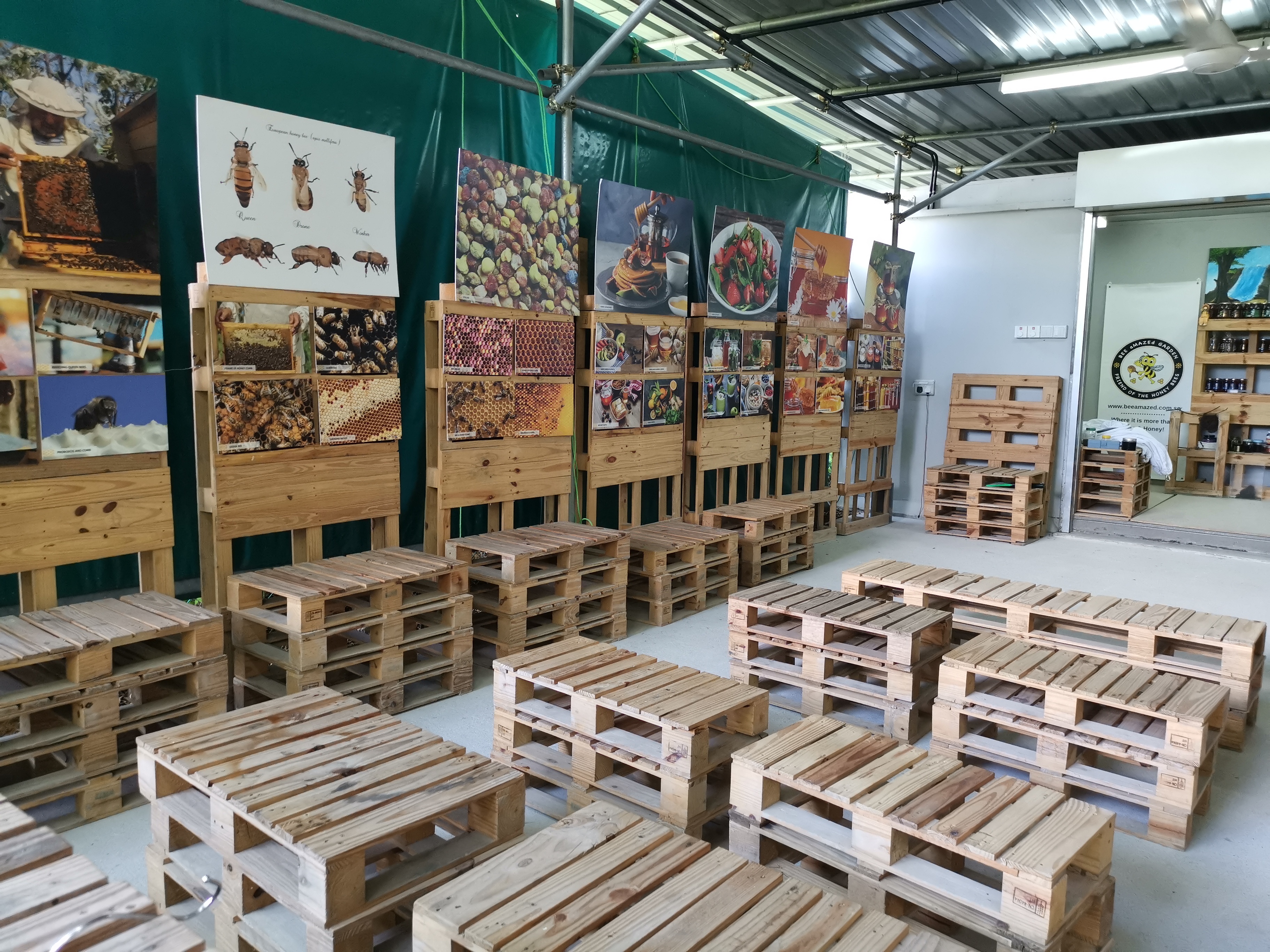 A seating area where Chong hosts his guests. Photo by Ashley Tan
A seating area where Chong hosts his guests. Photo by Ashley Tan
As we chat with Chong, I can still see the MOE educator in him shine through — he throws in learning terms like "service excellence" and "value education" when describing the workshops he runs, and peppers his anecdotes with life lessons and simplifying analogies. One can easily imagine him doing the same with students.
Chong says as he shows us his hives, which have all been repurposed from other materials:
"Be innovative, be creative. We should all 'make something useful out of nothing', that's my tagline."
From the larger hives made of wood sitting on benches, to the upcycled wooden pallet seats, and the smaller vertical hives made of recycled bamboo strung up around the area, it's clear Chong takes that adage to heart.
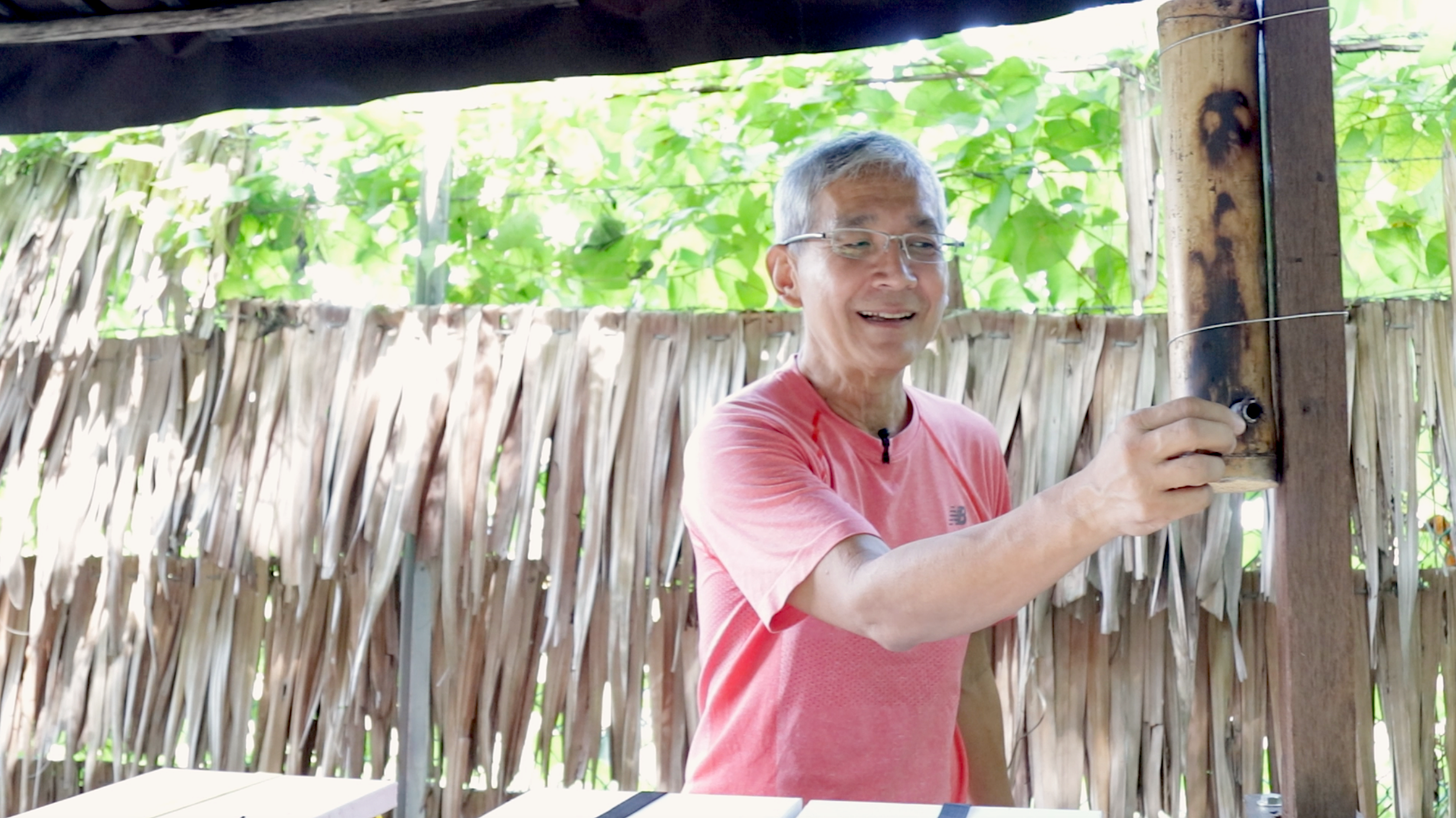 Chong points to one of his homemade bamboo hives. Photo by Angela Lim
Chong points to one of his homemade bamboo hives. Photo by Angela Lim
Chong adds that caring for bees isn't that different from caring for students. He jokingly adds that the years spent as a teacher had actually prepared him for the job of a beekeeper.
"When you're a teacher, you have a class of 40 students. If you're a beekeeper, you have a colony of roughly 10,000 bees. So a colony is like one class of students. In a sense, as an educator, I can relate how I manage my school to how I manage my bees."
Befriending the bees
BEE AMAZED is not just a passion project — Chong has also embarked on a journey to rid people of the "unnecessary and unfounded" fear of bees.
When asked whether his visitors step in with misconceptions of the insects, Chong immediately nods in agreement.
"The first misconception is that bees are scary, or out to sting us. But really, it's common sense. As long as we don't provoke or disturb the bees, they'll leave us alone. If we do so, of course we're asking for trouble. That's being foolish."
He cites an incident where a bee landed on a visitor but did not sting them.
"My very first workshop was to host a school group, and one bee landed on the principal's ear. My heart dropped! But I told the principal to remain calm and not move, and she did, the image of poise and dignity. Luckily, after a few minutes the bee simply flew away.
Situations like these really validate the advice I give to people: if you're calm and composed and don't swat the bee, the bee will just fly away."
Chong's garden contains 18 hives, colonised by two species of bees: a honey bee species Apis cerana, and stingless bees of the genus Trigona.
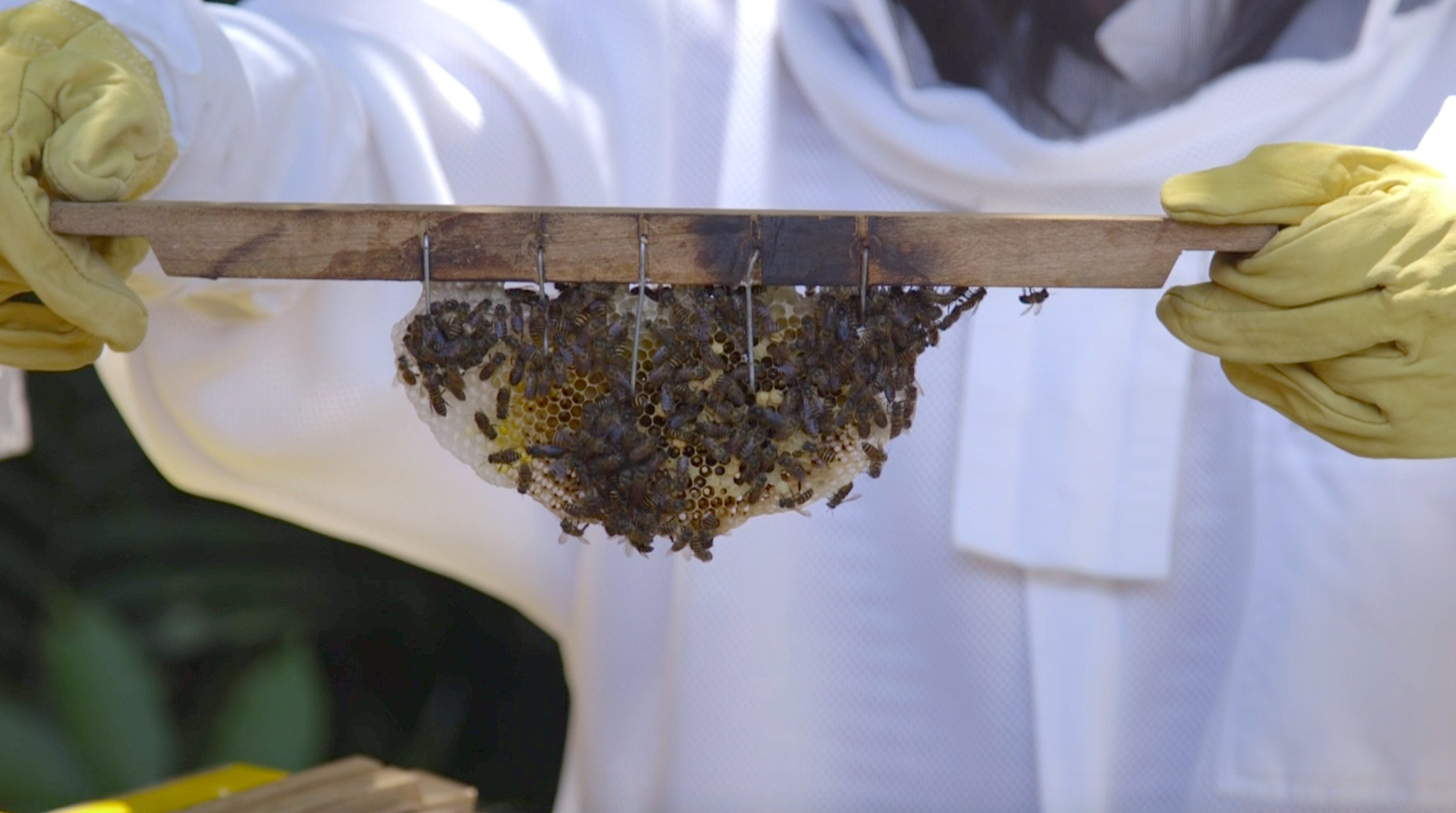 Apis cerana honeybees and their honeycomb. Photo by Angela Lim
Apis cerana honeybees and their honeycomb. Photo by Angela Lim
The larger wooden hives in Chong's garden which house the honeybees are spruced up with colourful paint and drawings of flowers on the side. Every hive, which holds one colony of bees each, has names like Lois, Elizabeth and Hannah painted on the side. Incidentally, they're all female names.
The majority of bees, as Chong explains to us, are actually female. All the bees that leave the hive to collect pollen are females, while drones, the male bees, remain within the hive to mate with the queen.
"Some people say, "How come you have so many girlfriends?" I say, "No, it's because all the bees are females". So to honour the female bees, I give them female names."
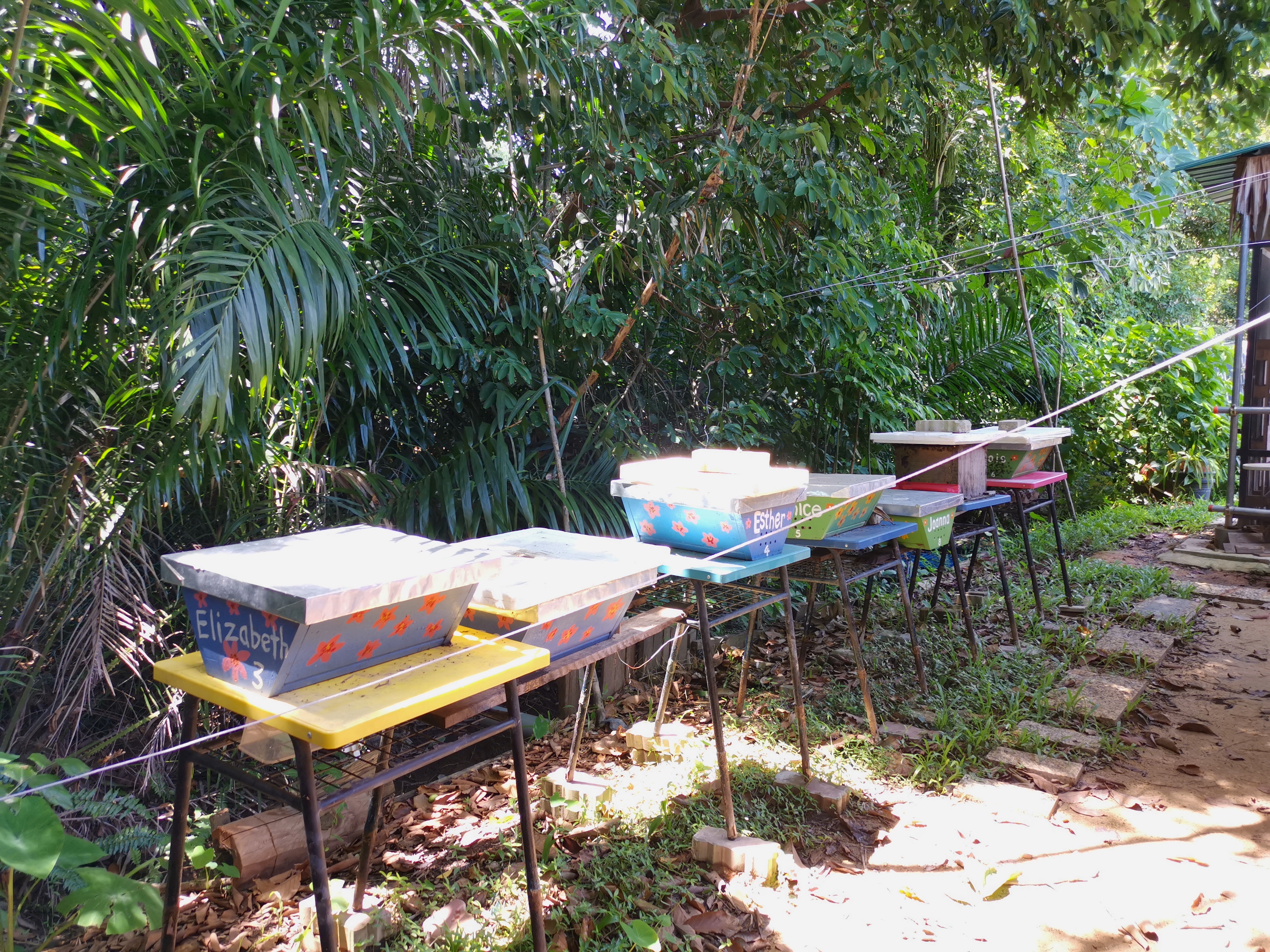
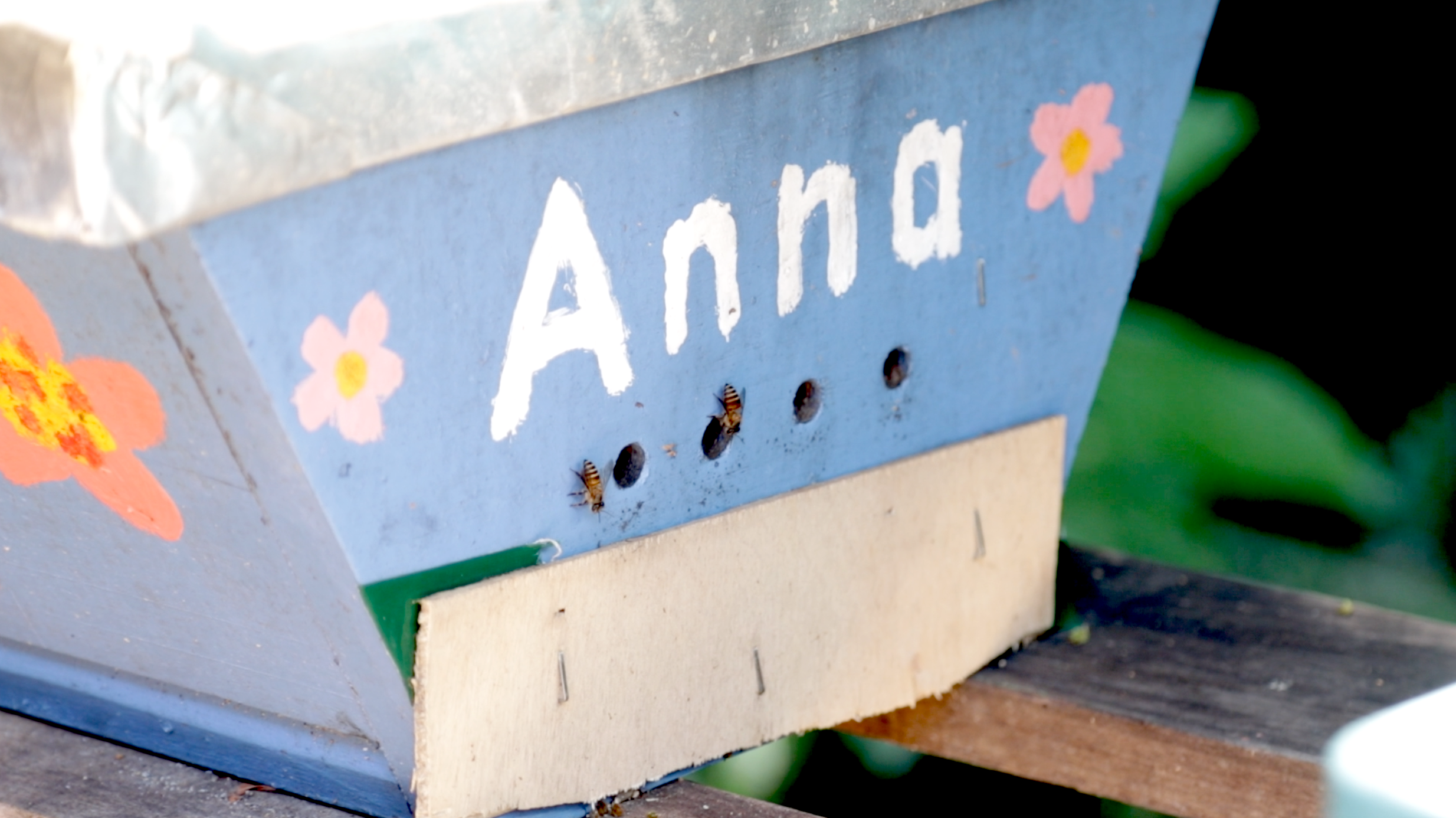
It struck me that perhaps the names and decoration of the hives help to personify the bees, even if unintentionally by Chong, by portraying them in a more friendly and personable light. He also calls visitors to the garden "friends of the honeybees".
Ultimately, he tells us, bees just want to survive. Whenever bees sting someone, they die — there is thus no good reason to sting anyone unless provoked.
The critical and irreplaceable role bees play in ecosystems — even in S'pore
For Chong, bees aren't just his livelihood — his love and admiration for them drives him to view them as companions, or even role models we can learn from.
"Bees are very good servants, they serve one another since young. They're also so dedicated in pursuit of excellence, and they work so hard and diligently to produce all this honey. And it's more than just producing good honey, it's about the survival of the next generation. They are single minded towards this end.
I believe that there's much we can learn from them."
Learning aside, bees are actually critical to the environment and our ecosystems, pollinating a large number of flowers, plants and commercial crops like apples, grapes, broccoli and tomatoes.
Unfortunately, humanity is in the midst of an insect extinction, with more than 40 per cent of insect species declining, according to The Guardian. Bees are one of those drastically affected. There were a recorded 6 million honeybee colonies in 1947, but that number has dropped to 3.5 million in 2019. Population declines of bees can result in a collapse in the global food production industry.
A one-man show
Currently, Chong runs his beekeeping business entirely by himself — and that, for him, is the most challenging part.
Aside from conducting and hosting workshops and visitors, Chong also helps people who request his help with removing hives from their property. He then safely relocates the hives and transports them to his garden.
Chong contends with natural predators as well — he tells us he has lost whole hives to monkeys, ants, and wax moths, whose larvae consume the honeycomb.
And yes, his bees do make honey, but he doesn't sell it. Chong’s bees are used solely for education only. Instead, he imports honey from Israel to sell here.
We did get to taste the honey Chong imported, and interestingly, various flavours (made when bees collect pollen from varying species of flowers) contained very subtle notes that emerged even to my undiscerning palate.
 Chong's brand of imported honey, My Honey. Photo by Ashley Tan
Chong's brand of imported honey, My Honey. Photo by Ashley Tan
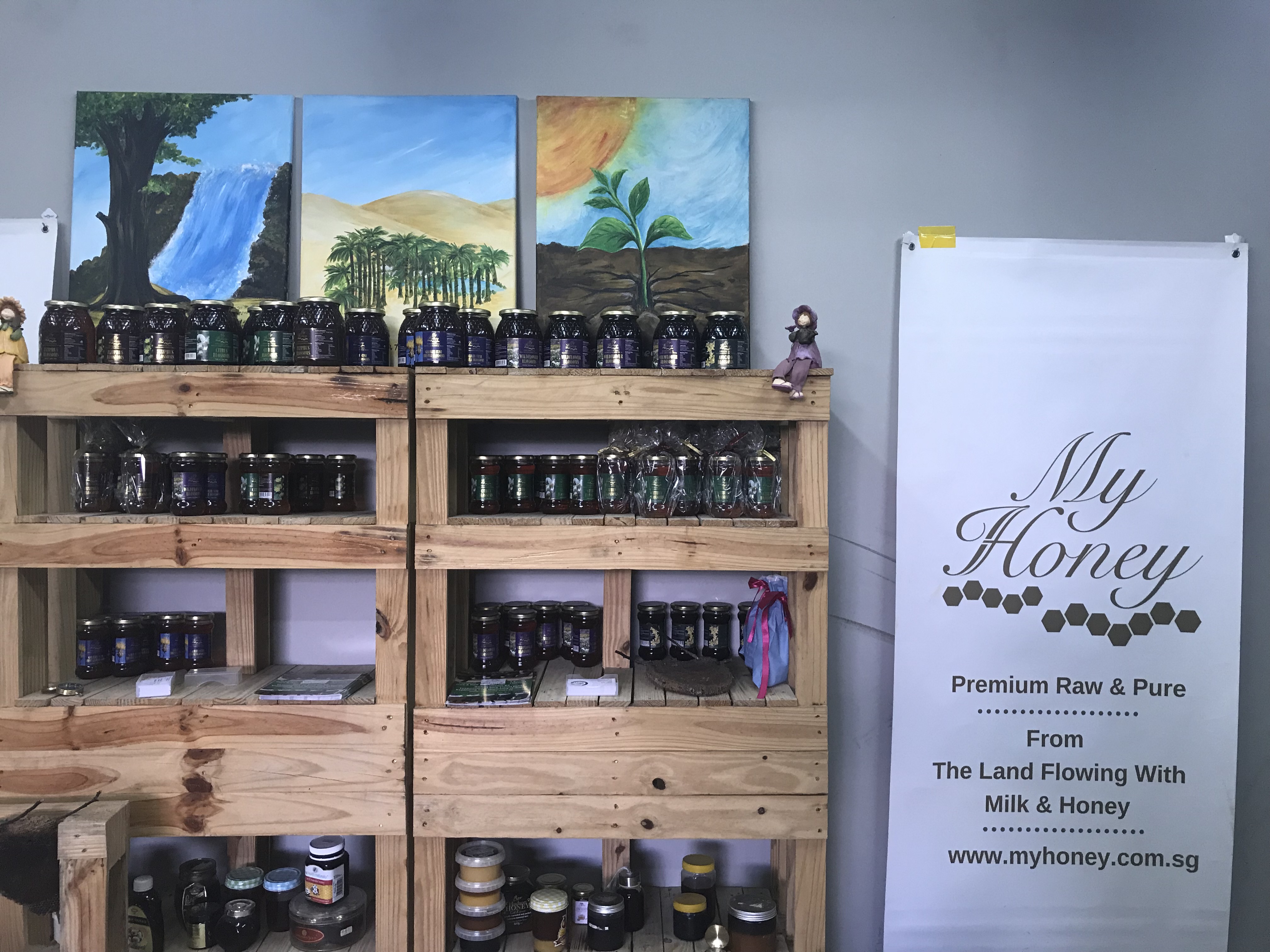 The small stall inside BEE AMAZED Garden where Chong's honey is displayed. Photo by Ashley Tan
The small stall inside BEE AMAZED Garden where Chong's honey is displayed. Photo by Ashley Tan
Despite the difficulties of maintaining BEE AMAZED without any help, Chong seems to truly have embraced the job of helping to bridge the gap between bees, misunderstood and yet so critical to the environment, and the general public.
"Bees just want to defend themselves and their home, that's why they sting. Right now, Singaporeans are slowly becoming more and more environmentally friendly. I hope to make Singapore bee-friendly again, and maybe in the future, beekeeping will become as common as keeping guppies."
Hear more from John himself in this video:
If you wish to join one of Chong's workshops to learn more about bees or beekeeping, you can find more information or contact him via his website here. You can also purchase Chong's honey from this website.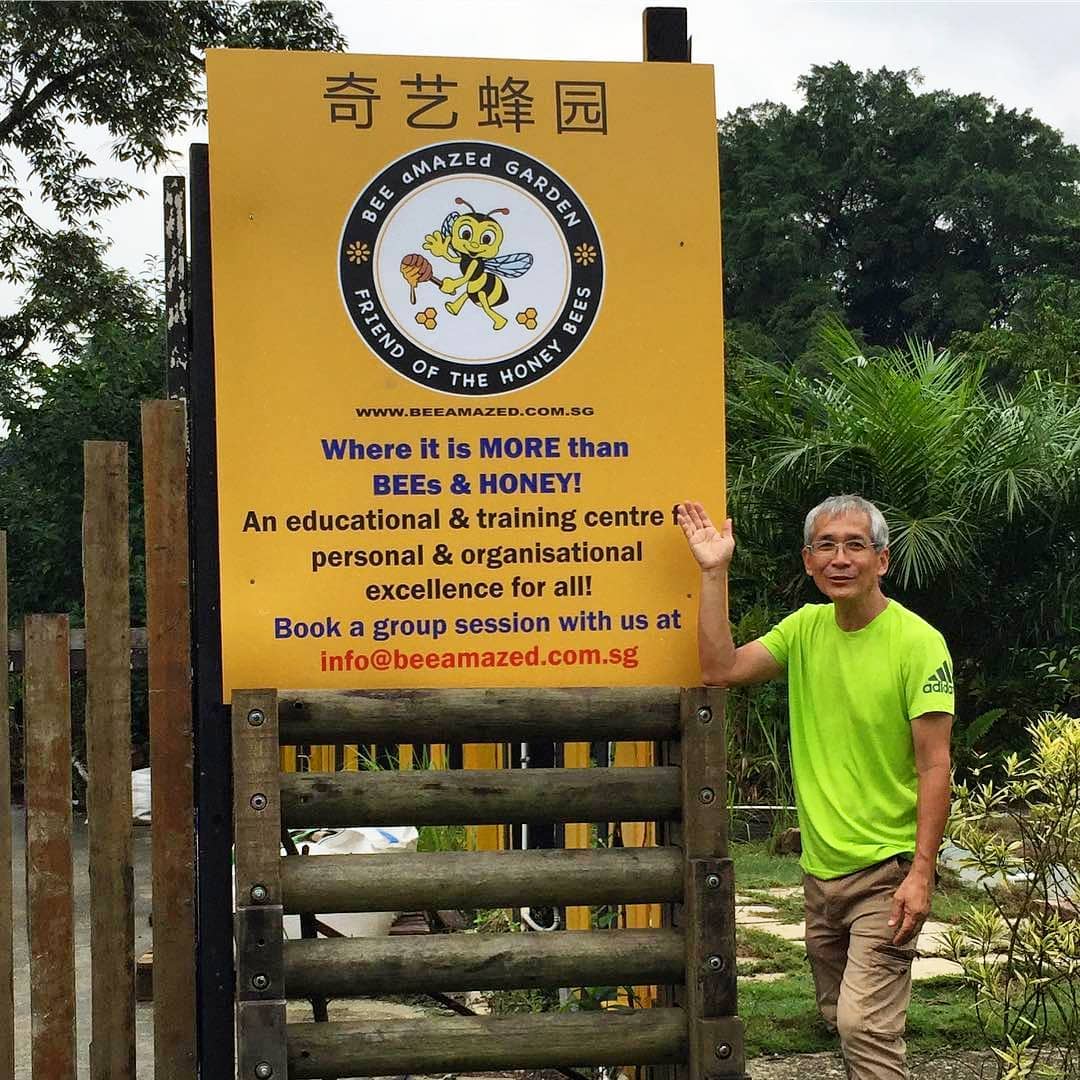 Photo via Ground-Up Initiative (GUI), Facebook
Photo via Ground-Up Initiative (GUI), Facebook
Sadly, the land managed by GUI is now likely to be taken back by the government for redevelopment into housing, according to an Urban Redevelopment Authority masterplan.
The folks at GUI are appealing against its decision, having invested years into building environmentally-friendly and sustainable structures and a community in the area. You can still help them out by donating funds, which will go into the workshops they hold, and general maintenance of the space.
You can read more about it here:
Top photos by Angela Lim
If you like what you read, follow us on Facebook, Instagram, Twitter and Telegram to get the latest updates.
